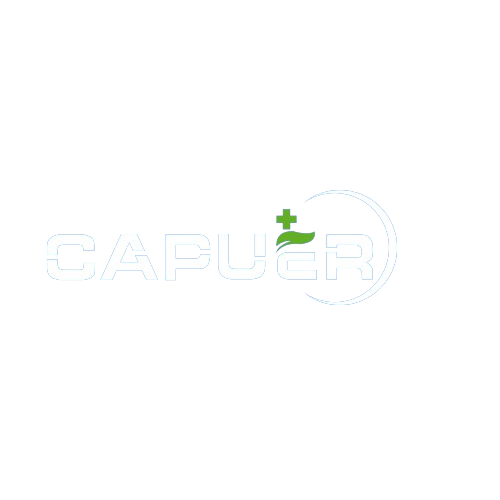Science Behind Hyperbaric Oxygen Therapy
When we breathe under normal pressure, the oxygen content in the air is about 21%, nitrogen accounts for 78%, inert gas accounts for 0.94%, and the other 0.06% are carbon dioxide, water vapor, dust and other substances. Human life activities are inseparable from oxygen. Oxygen enters the alveoli with breathing, and then is transported to the various tracheal tissues of the collective through the heart. People breathe in the oxygen needed for the metabolism of the new city.
Under normal pressure, the oxygen concentration that the human body can absorb is generally between 25% and 55%. When the human body is in a high-pressure environment, the oxygen concentration that the human body can absorb can reach more than 85%. The oxygen content is increased several times or even dozens of times, and the diffusion distance of blood oxygen is increased, so that the original hypoxic lesions of the disease can obtain sufficient oxygen supply, and achieve the therapeutic effect that cannot be achieved by normal pressure oxygen inhalation.
Physical dissolved oxygen boost
Breathing under normal pressure, the oxygen in the air diffuses into the blood from the alveoli through the membrane barriers of the alveolar and capillary walls. Most of it combines with hemoglobin to form oxygenated hemoglobin, and only a part of it is dissolved in the blood. According to Henry’s law, the body is in Under hyperbaric oxygen, the partial pressure of oxygen increases. Therefore, the diffusion of high partial pressure oxygen from the alveoli like blood and body fluids is mainly physical dissolution. The amount of dissolved oxygen in every 100 ml of blood increases by about 20 times compared with normal pressure. In this way ,Tissues got enough dissolved oxygen to meet the needs of life
The ideal supply of oxygen
Oxygen is an indispensable substance for life activities. The body continuously consumes oxygen, and the body’s storage of oxygen is limited. Therefore, the organization needs sufficient oxygen supply to maintain the normal function of life. Especially in the case of hypoxia, hyperbaric oxygen increases the physical dissolved oxygen, increases the oxygen reserve and the diffusion distance of oxygen, so that the body’s ability to store and transport oxygen is greatly improved, thereby helping the body to quickly heal and restore health
Oxygen Level Decreased
Hypoxia is the root cause of all diseases. Mild chronic hypoxia is manifested as sub-healthy state, fatigue, decreased work ability, physiological dysfunction, and general malaise. At this time, no disease can be found through inspection, but after a long time, it will appear Various diseases. If the brain tissue is hypoxic for more than 3 minutes, it can be unconscious for a few days, and if it is hypoxia for 8-10 minutes, the brain function cannot be recovered.
Therefore, we must always pay attention to whether the body is hypoxic. Once the symptoms of hypoxia occur, we must promptly increase the oxygen reserve for the body through effective oxygen supplementation methods. Hyperbaric oxygen therapy is an efficient oxygen inhalation program
Oxygen Level Increased
Hyperbaric oxygen can greatly increase the oxygen tension gradient between the alveoli and blood, and between blood and tissue cells. Due to the large oxygen tension gradient, the diffusion rate of all oxygen is fast, and the diffusion rate and effective diffusion distance of oxygen are large.
Under normal pressure, the amount of oxygen diffused into the blood from the alveoli is 900-1200ml per minute, the effective diffusion radius of oxygen in the blood under normal pressure is 30 microns, and the effective diffusion radius of oxygen in the blood can reach 100 microns under hyperbaric oxygen above
HBOT Therapeutical applications
The OxyAnchor mild HBOT chamber is a certified non-medical device, easy to install and operate, perfect for clinics, health centers, professional sports clubs, wellness centers , also safe for home use
We deliver and help install the Oxyanchor hyperbaric chamber, also supply the necessary know-how to operate and manage your HBOT chamber. All chambers comes with at least 1 year warranty. and whole life after-sales service
Hyperbaric Oxygen Therapy Protocols
Hyperbaric Oxygen Therapy is recommended for patients according to a treatment protocol issued by a medical authority to address specific medical conditions based on treatment program that prescribes operational parameters such as atmospheric pressure, duration of treatment and number of treatments, including safety of treatment.
Medical conditions require different protocols, with treatments that last from 60 to 90 minutes, administered according to a calendar, at variable pressures (1-2.5 ATA) with daily sessions for 10 to 30 days.

Potential Risks
The most common side effect is barotrauma to the ears and sinuses caused by the change in pressure. To minimize this risk, patients learn techniques to promote adequate clearing of the ears during compression or tubes may be inserted in the ears. Occasionally some patients may experience changes in their vision during their treatment period. These changes are usually minor and temporary. A rare side effect is oxygen toxicity which is caused by administering too much oxygen
The science behind the magical powers of oxygen
Hyperbaric oxygen is used to treat all conditions which benefit from increased tissue oxygen availability, as well as infections where it can be used for its antibiotic properties, either as the primary therapy, or in conjunction with other drugs.
Air or Gas Embolism
Carbon Monoxide Poisoning
Compartment Syndrome/Crush Injury/Other Traumatic Ischemias
Decompression Sickness (Bends)
Diabetic and Selected Wounds
Exceptional Blood Loss (Anemia)
Gas Gangrene
Intracranial Abscess
Necrotizing Soft Tissue Infection
Osteoradionecrosis and Radiation Tissue Damage
Osteomyelitis (Refractory)
Skin Grafts and (Compromised) Flaps
Thermal Burns
Autism
Cerebral Palsy
Lyme Disease
Migraine
Multiple Sclerosis
Near Drowning
Recovery from Plastic Surgery
Sports Injuries
Stroke
Traumatic Brain Injury
More application of HBOT
What are complications of Hyperbaric Oxygen Treatment ( Pros and cons of hyperbaric oxygen treatment)
Side effects and possible


